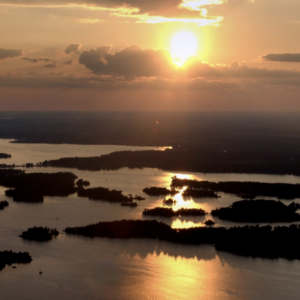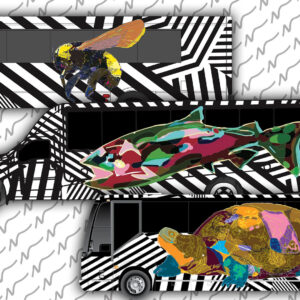Canada’s Sahtu Region: Conserving the Land and Waters of the North
 |
| Migrating Snow Geese by Stewart Marshall (via Flickr) |
A land use plan for the Sahtu Region of the Northwest Territories has entered into its third draft, and with it comes hopes that important cultural and ecological zones will be protected before major industrial development begins.
In comments issued last month, Nature Canada recommended that several ecologically significant spaces, including three Important Bird Areas, be given special status as Conservation Zones.
The need to establish protected areas in the Northwest Territories is all the more important as communities there prepare for the possible advent of the Mackenzie Gas Project – one of the largest, most disruptive projects ever considered in Canada’s north.
Important Bird Areas in the Sahtu Region
The Northwest Territories contains 17 Important Bird Areas, three of which are located inside the Sahtu Settlement Area: Lower Mackenzie River Islands IBA, Middle Mackenzie River Islands IBA, and Brackett Lake IBA. All three IBAs are currently designated as special management zones, and Nature Canada has recommended they be redesignated as conservation zones in the land use plan.
These IBAs represent important breeding habitat for significant concentrations of several species that could currently be left vulnerable to disturbance from development. The Lower Mackenzie River Islands IBA is a major stopover along the Western Central Flyway, hosting as many as 112,800 waterfowl and about half a million snow geese in spring.
The Middle Mackenzie River Islands IBA is visited by birds such as the Great White-fronted Goose, Canada Goose, Tundra Swans, as well as many duck species during annual spring migrations. Up to six percent of the global population of Snow Geese congregates here.
Brackett Lake IBA provides excellent breeding habitat for ducks and is used by roughly two percent of the Canadian White-fronted Goose population.
Edaííla and Colville Lake
Edaííla, also known as Caribou Point, is a very important area for the people of Déline, and the NWT as a whole. The area rests on a massive 8,700 square kilometre headland that divides the east side of Great Bear Lake and is a key site during the annual migration of the Bluenose-East herd of barren-ground caribou. The area holds critical cultural and ecological significance for the people of Délįne and other NWT and Nunavut communities and represents important caribou and fish habitats in the region. In fact, Edaííla encompasses the entire Grandin Plains ecoregion, spanning boreal forest, boreal transition and tundra habitat types.
There has long been substantial community interest in permanently protecting both the surface and subsurface areas of Edaííla. In fact, the people of Déline endorsed a failed proposal to designate Edaííla as a National Wildlife Area (NWA). Nature Canada has strongly recommend that Edaííla, in its entirety, be listed as a conservation zone to safeguard the ecological and cultural richness of the area for future generations, while ensuring that proposals to amend the Plan over time will not jeopardize the area.
Nature Canada has also recommended that the Colville Hills area, home to the community of Colville Lake and approximately 120 km northeast of Fort Good Hope, NWT, be designated a conservation zone, given that the region offers critical breeding habitat for a significant number of ducks.
The completion of a land use plan will give Sahtu residents a tool to balance cultural, economic and environmental interests – before major industrial activity begins. The plan will take effect upon approval by the Sahtu Secretariat Incorporated, the Government of the Northwest Territories and the Government of Canada.



